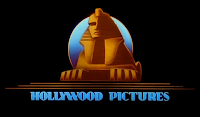Conventions used in 'The Sixth Sense'
Music: The music in the opening of 'The Sixth Sense' begins during the showing of the second production company ident. The music used is very slow and quiet and starts to slowly get louder as the opening progresses on. Once the writing starts on the screen, the rest of the instruments start to come in. This creates tension and the idea of suspense. The violins(or other string instrument) is the main sound that can be heard. The slow violins connote a creepy, eerie theme. Also over the violins, you can hear a low piano chord played over it every now and then. By doing this, it hints out at the story line and gives the viewers an element of horror and that something bad may happen in the film. The music is also very simple so it engages the viewer and gets them interested as to what may happen in the film. The music is in sync with the titles to give it a sort of structure.
Titles: At first, the idents of the production companies were shown, followed by a written visual of the production companies.


After this the name of the producers of the film are shown:
After this the star of the film's (Bruce Willis) name appears on the screen. Up until this point the music has become louder and once the writing disappeared stayed at that same pace:
Next to be shown was the name of the film itself. Once the name appeared on to the black screen, the music changed to a screechy high pitched noise compared to the rest of the music:
After this a few of the additional cast were shown. Here are some examples:
Surprisingly, the director of the film was shown right at the end of the title as opposed to near the beginning:
Establishing the genre: The genre was established through the mood they set for this film. The background was just plain black. This connotes, evil, bad, creepy, scary, sinister etc. this automatically tells us that this is not going to be a comedy or a romantic film, that its going to be a thriller. The simplicity of the background gives the viewers a sense of mystery and creates suspense. This also hooks the audience in as they would think about why it is just plain. Compared to other film openings, this film doesn't give a lot away through the visuals. Instead they focus on sound, so this tells us that sound could be important throughout this film. Also, the writing is sort of faint and fades in and out which again tells us that within the film there could be stuff that come and go which aren't supposed to be normal (in the case of the film, the ghosts).
The cuts are quite slow and soft which creates tension. This is because its makes us think that they're building up to something important. Doing this also creates suspense as it makes the viewers curious as to what may happen.














































